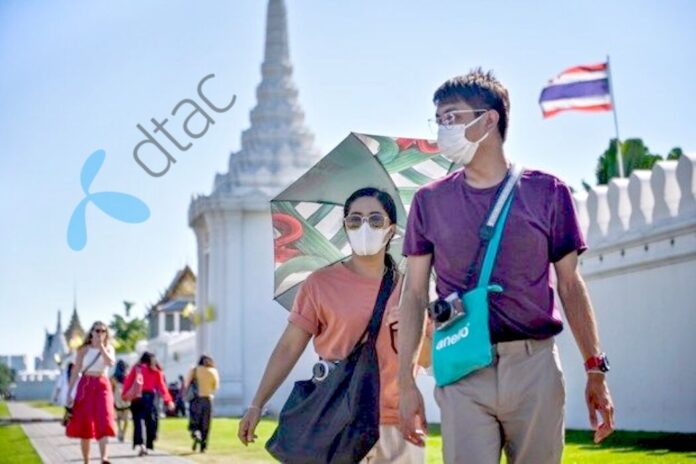A new study used mobile data from DTAC customers to analyse their movements and extrapolate strategies for increasing domestic tourism within Thailand. The study was conducted by Chulalongkorn University, the National Digital Economy and Society Commission, and Boonmee Lab, and used data from June 2020 to October 2021 of 10% of DTAC’s customers who fit the travel parameters being examined, with their permission.
The data analysis pointed towards two areas that could improve domestic tourism in provinces less commonly visited by foreign travellers and even suggested which provinces could most benefit, with Nakhon Si Thammarat and Chiang Rai standing to gain the most overall. The study said that micro tourism, experience-based overnight tourism, and what they called tourism clusters should be the focus for domestic operators.
The study revealed that many people were taking numerous trips within 150 kilometres of their home, reachable within one or two hours of travel. The data suggested supporting this micro tourism by creating activities like historical tours, fruit picking, cooking classes, and craftsmanship demonstrations that focus on local skills and products. The provinces that would most benefit from this were, in order, Nakhon Si Thammarat, Chiang Rai, Nakhon Phanom, Lamphun, Nakhon Nayok, Ranong, Phetchabun, Ubon Ratchathani, Mae Hong Son and Phatthalung.
In the second category, Nakhon Si Thammarat, Phetchabun, Chiang Rai, Ubon Ratchathani, Phitsanulok, Chumphon, Chanthaburi, Sri Sa Ket, Buri Ram and Loei had the most to gain if tourism operators put together overnight trips focusing on giving the traveller a special experience.
Finally, tourism clusters are when a local area can offer multiple tourist attractions all in close proximity to each other. If these attractions sync together, are easily connected, and give travellers a quality experience, they provide the huge advantage for a weekend traveller to be able to participate in multiple activities in the same area.
It’s like a smaller domestic version of the way international travellers will visit Koh Samui, Koh Phangan, and Koh Tao – all relatively close to each other – in one trip; likewise, it is easy to visit Phuket, Krabi, Ao Nang, Koh Phi Phi, and Railay Beach in one combined trek. The provinces of Nakhon Sawan, Chai Nat, Sing Buri, Ang Thong, Ayutthaya and Pathum Thani were determined by the data to be the most viable for taking advantage of tourism clusters.
A chief executive at DTAC said that analyzing the data, especially during a time of minimal international tourism due to the pandemic, was a golden opportunity to understand and improve domestic tourism. He said the data provided allowed for a thorough, if not somewhat creepy, analysis of people likely to engage in domestic travel.
“The use of mobility data with anonymity, privacy and cybersecurity rules can support the study of people’s behaviour, environmental monitoring, transportation, social networks and businesses. DTAC hopes that mobility data will help researchers to integrally understand movement patterns and concentrations of tourists. Tourism stakeholders in Thailand should turn the pandemic crisis into an opportunity by resetting the industry with more comprehensive data, and better understand the circumstances and balance between international and domestic tourism.”
The DTAC data was gathered by collecting mobile signals pinpointed to the tambon level, focusing on people who spent the weekends outside of their provinces. 67% of those people were travelling and staying overnight, while 35% just took day trips. [Yes, that adds up to 102% for some reason.] It is worth noting that 54% of the people whose data were observed live in the greater Bangkok area.
About 25% of the people observed did not reveal their gender, but 40% were male and 35% or female. People aged 21 to 40 years old made up the majority of the people in the study, totalling 47%, while those older than them between 40 years old and 60 years old, made up another 35%. Elderly travellers over 60 made up 14%, while youth travellers that were 20 or younger comprised just 4% of those observed in the study.
SOURCE: Bangkok Post
For more information on Domestic Travel Insurance, CLICK HERE










